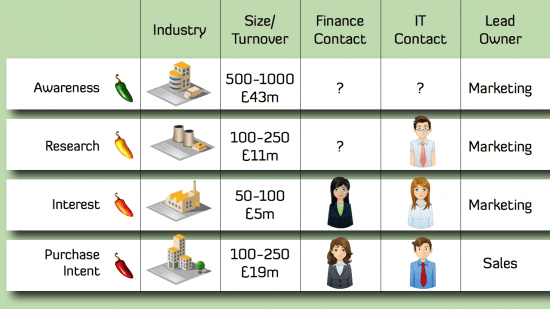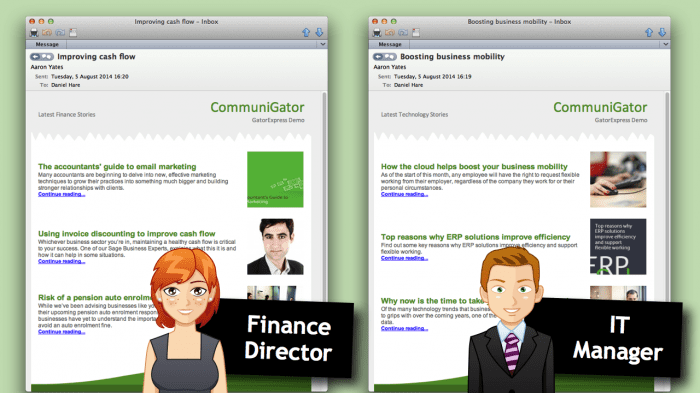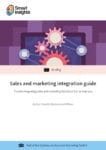Practical content marketing and profiling techniques to identify senior decision makers
Senior decision makers are increasingly reluctant to hand over their contact details when exploring potential solutions. You may have noticed how busy managers often omit their phone numbers from their email sigs! At the same time, the explosion in content marketing with the availability of detailed information online in a range of formats has enabled those seeking to use your products or services to carry out extensive research on you independently without booking a demo.
There is now little need to book a demo, take a trial or speak to a salesperson when so much content exists online to inform their decision.
Whilst these prospects are carrying out their due diligence research at distance, others who are at a much earlier stage of the buying cycle are seeking content that will inform and educate them.
Whitepapers, videos, thought-leadership pieces and research are standard fare in any inbound content marketing plan and can be very effective at driving traffic to your website, but putting barriers in place to access this content can be premature in two respects.
- Firstly, across the whole B2B site, less than 5% of website visitors will volunteer their contact details in exchange for access to the content - although it's higher on individual landing pages of course [see these B2B Conversion rate examples].
- Secondly, those looking at this content are not always ready for the sales follow up that you would attempt through capturing their details.
In fact, just 27% of B2B leads are sales ready when they first divulge their contact details (Marketing Sherpa). For the majority of contacts you acquire in these circumstances, there is a lot more lead nurturing to be done.
If you’re treating the download of a whitepaper as a buying signal, you may find your sales efforts a little premature.
However, having their details at this early stage does enable you to monitor their behaviour. For all of those who would not divulge their contact details in any circumstances, marketing automation and tracking technologies can help you identify them nonetheless and add them to Lead Nurture programmes.
By using a variety of techniques to identify and nurture companies visiting your website from an early stage, you are then able to communicate more effectively as their interest becomes more serious.
Download Expert Member resource – Sales and Marketing Integration Guide
This guide will give you practical recommendations, based on real-world examples, showing how to get your sales and marketing teams working together more effectively. It covers best practices for processes, systems and cultural issues that you need to manage, with a focus on business-to-business organisations. .
Access the Sales and marketing integration guide
Signals for the advanced buying stage
The online behaviours of those at a more advanced buying stage are different. They are doing due diligence and looking at different types of content from those who are merely researching the topics that your content covers. Case studies, pricing, specifications and brochure downloads tend to be more reliable indicators of buying behaviour. Why would someone be interested in a case study if they had no interest in buying?
Although they are doing this at distance, we can still track these behaviours. Case studies are seldom behind a registration wall, hence the value in having identified them earlier in the process. We can track company and contact activity from initial visit, right through to purchase. We can also see how, depending on business size, different people in a company become involved in the process as they progress through the purchase funnel.

At the point a contact demonstrates some form of genuine interest, the nature of your marketing should change. Content designed to convey your proposition more clearly will work better in these circumstances. There comes a point where blog posts and other light touch content is not sufficient to help progress these leads.
Prospects will be more receptive to in depth content, but you should also attempt to give them opportunities to make contact and help you qualify their interest further. This is where interactive content types come into play; seminars and webinars, surveys and solution wizards (calculators, assessment tools).
This content should help them develop their understanding of your proposition, but also help you to better understand them.
Five killer B2B profile attributes
Your understanding of prospects should be structured in such a way that you can then segment and target future communications.
- 1. Location - Are they located in an area that you serve? Does distance have a bearing on your approach or who approaches them?
- 2. Size - The requirements of an enterprise are seldom the same as an SME. How does your proposition differ to certain sizes of organisation? What differences are there likely to be in the sales process? More due diligence? More stakeholders? More time?
- 3. Industry - Likewise, different industries will have their own challenges. There may also be structural and legislative differences which have a bearing on your approach.
The first three killer attributes or values relate to the organisations you are targeting. Sometimes referred to as firmographic data. The latter two are contact centric; demographic. It is important to consider the implications of having multiple contacts to engage from a single company that you are targeting and how their role and seniority may dictate differences in your approach.
- 4. Role - Different departments will be interested in different aspects of what you can provide. Are there differences in the business benefits? Who will be interested in the technical aspects? Is there a compliance or legal requirement?Here's a simple example of how we can use technology to tailor content by role:

- 5. Seniority - Who will ultimately sign off on contracts or purchase orders? Are you able to deal with them directly or with their team? What relationships will you need to nurture and at what level?
To effectively communicate, you must better understand your prospect intimately.
Salespeople are used to contending with this variety and adjusting their behaviour and their pitch accordingly, but in marketing, we have to set out our stall in advance and try to guide leads along their own journey.
Everyone’s Different
Predicting the path from first time visitor to sales qualifiable lead is never something that we can map out fully. There are too many variables:
- Different timelines
- Different requirements
- Different stakeholders
- Different budgets!
The focus should be on progress rather than precision. Lead Score helps us to track cumulative behaviour. Different leads may consume different content, but their engagement with different types of content can give us a clear idea of their readiness for sales engagement.
A sudden jump in Lead Score due to multiple sessions from multiple contacts within an organisation is often a sign that your solution has been pitched internally. Other stakeholders in the decision making process will conduct their own desk research into the suggestions of their peers and seek the relevant assurances that their colleagues have done their due diligence properly.
It may be that those who visited your website and divulged their details at an earlier stage are not the ultimate decision maker, but researching solutions on their behalf.
As senior contacts become involved, they may be looking for answers more quickly than their colleagues who you have nurtured over time. Executive summaries, video testimonials and other forms of content that convey the key selling points succinctly are best deployed in these circumstances.
The larger the organisation, the more complex the vendor selection process and in recognition of the shift in the point of sales engagement, you should mine your sales literature for more content that can be deployed in a targeted marketing capacity.
For every action, there is an equal and opposite reaction
The quality of your content and your ability to deliver the right message at the right time to the right contact will define the success or failure of any lead nurture strategy.
In devising your strategy, you should match trackable actions to content delivery, but in the latter stages, also draw upon the Five Killer Values to ensure relevancy.
Also consider what you would do both in the positive and the negative. Your follow up to downloading a whitepaper may be to invite them to attend a webinar. What happens if they don’t attend? Some actions or inaction will qualify them out, but others need either perseverance or a variation in approach.
Other times, your calls to action may not appeal to certain types of contact. Senior decision makers may appreciate a more direct approach if it saves them time.
Avoid your own content cul-de-sacs too. Some specific actions warrant a specific response. Others will be more generic. This is where Lead Score can help you to make sense of a variety of actions and respond appropriately.
Businesses with established lead nurturing programs generate 50% more sales ready leads at a lower cost (Forrester Research). Historically, marketing has handled the 'one to many', whilst sales look after the 'one to one'.
Using Marketing Automation to nurture leads requires marketing and sales to work more closely, getting more and more targeted until such time as only a one to one approach is appropriate.
 Thanks to Dan Hare for sharing their advice and opinions in this post. Dan is a former integrated communications agency director, now heading up customer service at CommuniGator. He helps marketing professionals to deliver automated and targeted campaigns through CommuniGator’s software and its integration with a range of market leading CRM applications. You can catch him at CommuniGator’s informative and entertaining seminars.
Thanks to Dan Hare for sharing their advice and opinions in this post. Dan is a former integrated communications agency director, now heading up customer service at CommuniGator. He helps marketing professionals to deliver automated and targeted campaigns through CommuniGator’s software and its integration with a range of market leading CRM applications. You can catch him at CommuniGator’s informative and entertaining seminars.






 Thanks to Dan Hare for sharing their advice and opinions in this post. Dan is a former integrated communications agency director, now heading up customer service at
Thanks to Dan Hare for sharing their advice and opinions in this post. Dan is a former integrated communications agency director, now heading up customer service at 



